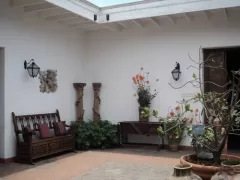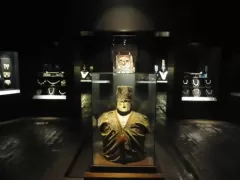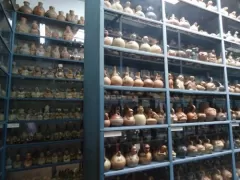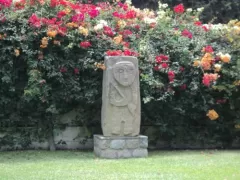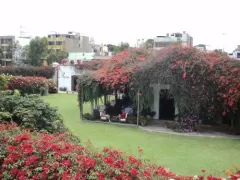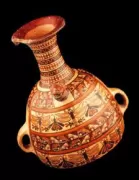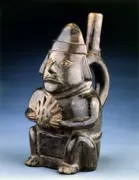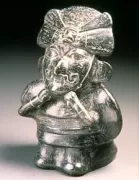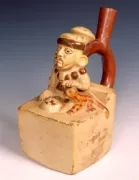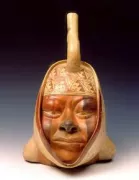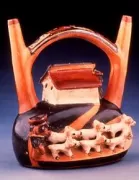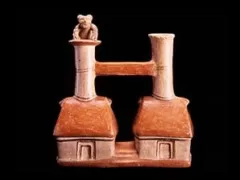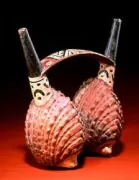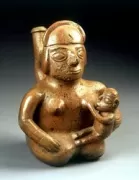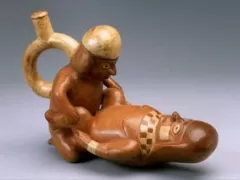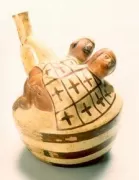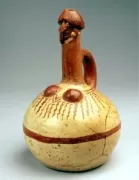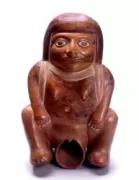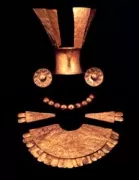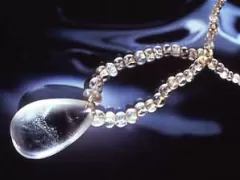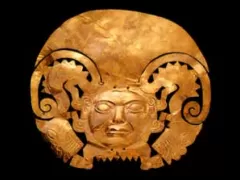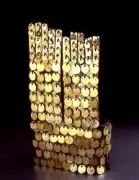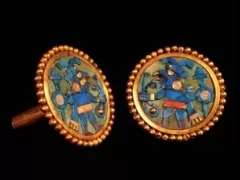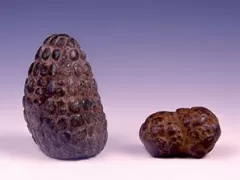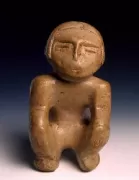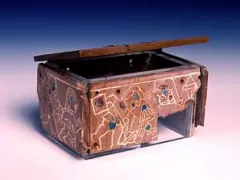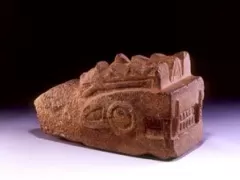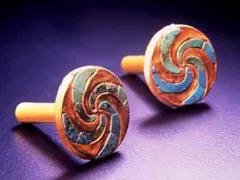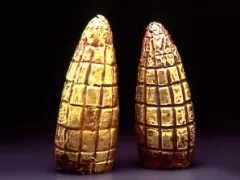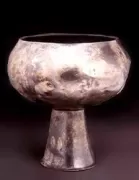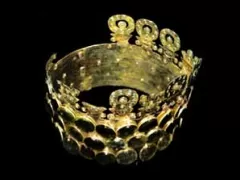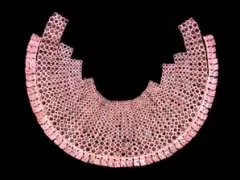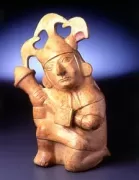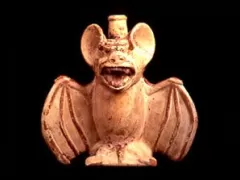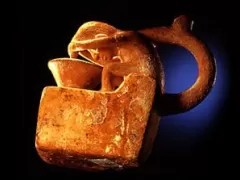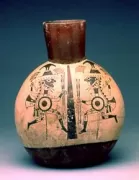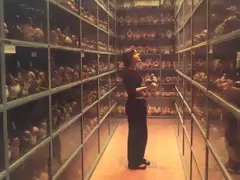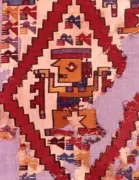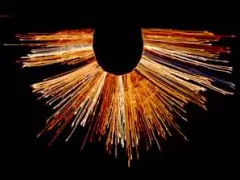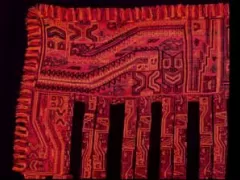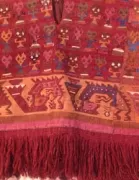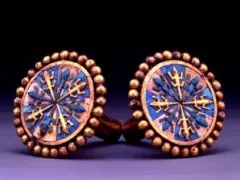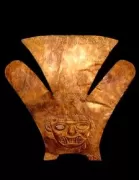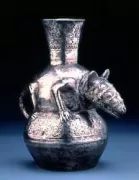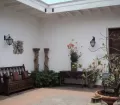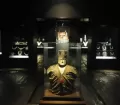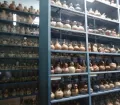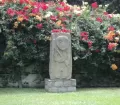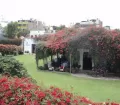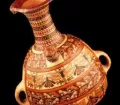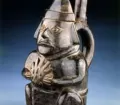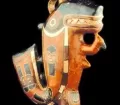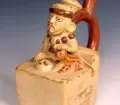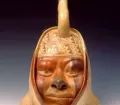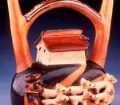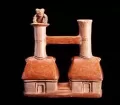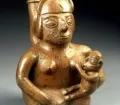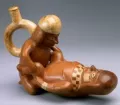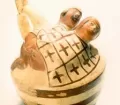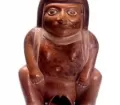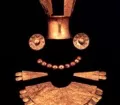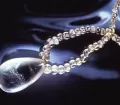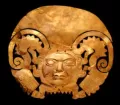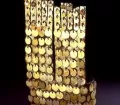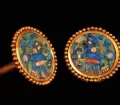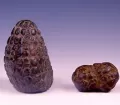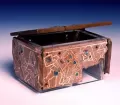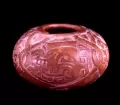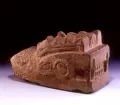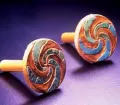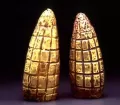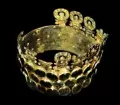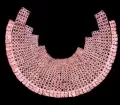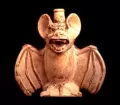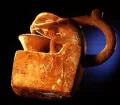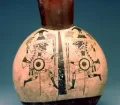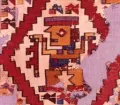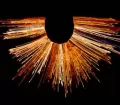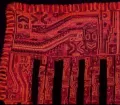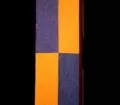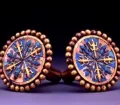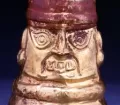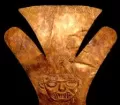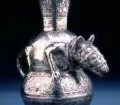Housed in a lovely restored 18th century viceroyalty-era mansion that was built over a 7th century pre-Colombian pyramid and surrounded by the most beautiful and tranquil gardens, the Larco Museum in Lima is a true jewel in the city’s museum scene.
The Larco Museum was founded by Rafael Larco Hoyle, considered one of the fathers of Peruvian archaeology, in 1926. The museum’s extraordinary and extensive archaeological collection, the loving compilation of the exhibits and the inviting and friendly atmosphere makes getting to know the fascinating history of ancient Peru a really enjoyable and interesting experience, even for kids.
Visitors of the Larco Museum are taken on a journey through over 5000 years of pre-Columbian Peruvian history. While the museum surely is famous for its unique erotic art collection, it as well houses one of the finest gold and silver collections from ancient Peru, all sorts of age-old, amazing textiles showing the artistic and technological mastery of weavers in pre-Colombian times and an impressive collection of ancient ceremonial vessels, pottery, stone and wooden objects.
Additionally, the Larco Museum is one of the few museums in the world that allows visitors to stroll through the museum’s storage area with its over 35.000 classified archaeological pieces.
A must visit when in Lima!
Larco Museum’s Exhibition Rooms
To make the development of ancient Peruvian cultures from their beginnings to the times of splendor and riches clearer and easier to understand for everyone, the museum is structured in different exhibition areas:
- Introduction Room: The small introduction area tells the story of Rafael Larco Hoyle, the founder of the museum, his collection and the history of the Larco Museum along with a timeline that helps visitors to understand the development of Andean civilization.
- Cultures Gallery: Spanning from about 5000 BC to the Inca period before the Spanish conquest, the cultures gallery consists of three rooms presenting pottery, stone and wooden objects manufactured and used by various cultures of ancient Peru. The exhibits are arranged chronologically and according to region (Peru’s northern coast, central coast, southern coast and highlands), covering more than 6000 years of pre-Columbian history.
- Textile Room: From the earliest phases of civilization in the Andes, alpaca and vicuña wool were used to weave simple clothes, items for everyday use and the afterlife. With advancing skills and technologies the pieces got increasingly sophisticated. The Textile Room displays astonishing examples of the artistic and technological mastery of ancient Peru weavers from northern, central and southern Peru at different times.
- Sacrificial Ceremony Room: Offerings, including human sacrifices, to the gods, spirits and other cosmic forces were very common among ancient cultures and often seen as a sacred act. This area of the museum introduces visitors to practices in ancient Peru.
- Ceremonial Vessels Room: The most important ceremonies of the different ancient Peruvian cultures were related to fertility, sacrifice and the cult of the dead. To hold ceremonial liquids such as water, fermented drinks and sacrificial blood, ancient Peruvians made special bowls and cups using materials that nature offered them, including clay, wood and precious metals such as gold and silver. Nice selection of these ceremonial containers, including cups, bowls, keros (also known as qirus, ceremonial drinking vessels) and aquillas (tall silver vases) is displayed in the ceremonial vessels room.
- Gold and Jewelry Gallery: The Gold and Jewelry Gallery spans over five rooms. On display are some of the finest pre-Colombian pieces made from gold, silver, copper and a variety of other alloys, including ceremonial pieces, funerary objects and adornments worn by the rulers and the priests that show their social and political status.
- Erotic Art Gallery: The Erotic Art Gallery is located in a separate part of the museum. The exhibition displays one of the largest archaeological collections of sexual representations that provides inside into the free and natural approach of ancient Peruvian cultures to sexuality. Pre-Columbian art incorporates detailed representations of male and female genital organs and sex scene in different positions that include men and women, but also gods and dead. Some scenes depict mythical episodes, while others have ritual significance.
- Storage Room: Usually only about 3% to 5% of a museum’s collection is on display in the exhibition rooms. The rest is hidden away from the public eye in storage rooms. As only museum in Peru and one of the very few around the globe, the Larco Museum’s pottery storage room open to the public allowing visitors to admire 35,000 pottery artifacts stacked in huge shelves.
Guided tours through the Larco Museum
While you easily can visit the museum on your own and wander around the different exhibition rooms, we highly recommend to spend the few Soles extra and take a guided tour through the museum. Especially visitors which aren’t familiar with the different ancient cultures and history of Peru might have a might better experience.
The guides at the Larco Museum are great and have lots of knowledge and interesting stories to share. They even make a museum’s visit for children fun and take everyone on a journey discovering the numerous cultures of ancient Peru.
The museum offers two different tours: “Masterpieces of pre-Columbian art in the Larco Museum” which takes about 45 minutes and “Ancient Peru through the Larco Museum’s collection” which takes 1 1/2 hours.
Guided tours through the museum are offered in Spanish, English, French, Italian, Portuguese and Japanese. While Spanish and English speaking guides are always available, we recommend to call the museum in advance to make sure a guide speaking any of the other languages is on site for you.
Information for visitors of the Larco Museum in Lima
Address: Av Bolívar 1515, Pueblo Libre, Lima (see map below)
Webpage: www.museolarco.org in Spanish, English and French
Opening Hours: daily, including public holidays from 09.00 am to 10.00 pm (December 24th, 25th and 31st, and January 1st, from 9:00 am to 6:00 pm)
Entrance fee: Adults S/ 30, senior citizens over 60 years S/ 25, Students S/ 15
Accessibility: the exhibition and service areas are connected by ramps
Languages: Description of pieces in the permanent exhibition in Spanish, English, French, Italian, German and Japanese
Photography: Taking photos without flash is allowed throughout the museum
Guided tours: available in Spanish, English, French, Italian, Portuguese and Japanese (see chapter above)
Café / restaurant: The on-site restaurant not only offers refreshments before or after your museum’s visit, but also one of the best Peruvian cuisines in the city.








